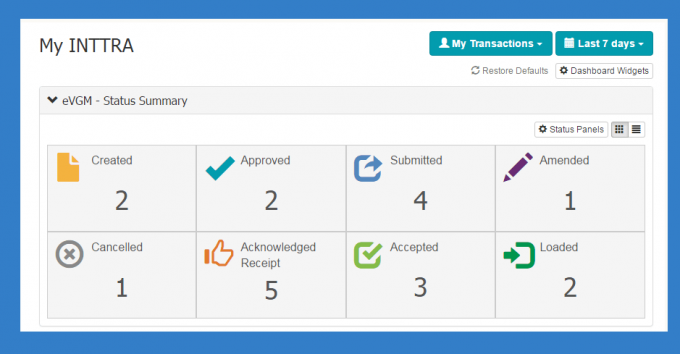K+N looks past Q1 revenue drop to improved margins from restructure
Swiss 3PL Kuehne + Nagel today said there were emerging signs of improving demand, despite ...

The world’s largest sea freight forwarder, Kuehne + Nagel (KN), has signed a deal to exclusively use the electronic VGM system developed by platform INTTRA for shippers
With little more than five weeks until the IMO’s amendment to its SOLAS regulations come into force, which will mean that every export container must be accompanied by a verified gross mass (VGM) document confirming its weight before it can be loaded on a vessel, many shippers and forwarders are still coming to terms with what the new legislation will require of them.
KN was one of the founding investors in INTTRA and is its largest user of booking and shipping instructions, which are transmitted electronically to its carriers.
However, president and chief operating officer Inna Kuznetsova told The Loadstar that while KN would use INTTRA’s eVGM application for transmitting the VGM information, that did not mean it had to also use its booking and shipping instructions platforms for every shipment.
“We have separated the VGM aspect from the shipping instructions and booking systems – and this allows container shipping lines to also process the VGM separately from the shipping instructions.
“We had to make this separation anyway, since around 8% of shipping instructions are received after the vessel has departed the port of loading, while carriers need to have the VGM well in advance of that,” she said.
“Everyone wanted to avoid changing their shipping processes, which are already complicated enough, especially in terms of the physical processes, but there are also different requirements in different regimes – Argentina, for example, requires the VGM data to be stored for at least six months; there are lots and lots of different requirements, and the scale of our platform means those different requirements can be accommodated,” she added.
Otto Schacht, executive vice president of sea logistics at KN, said: “The INTTRA eVGM service reflects how closely INTTRA has worked with the industry to understand and comprehensively address the technology needs created by SOLAS VGM.
“Their solution gives us a broad range of options for submitting VGMs to our global ocean carrier partners. This solution in combination with Kuehne + Nagel’s own VGM customer portal will contribute to an efficient and reliable communication of VGM data from shipper to carrier,” he added.
INTTRA’s eVGM system features a SaaS web application submission process with standard work flow-based data entry forms. This data then flows into an eVGM repository, and is accessible by carriers as well as third parties such as weighing station providers and container terminals.
The system also features a time capture element that allows corrections to be made to VGM submissions which may be in error.
“Let’s say you are a shipper with a steady flow of cargo and you have a normal VGM, then one day your supplier uses different type of pallet which means the recorded weight at the weighing station is significantly different. The weighing station is able to submit the correction, the new weight can be entered into the eVGM and the shipment can still be loaded. This flexibility means that not only are errors reduced, but also potential backlogs in the supply chain,” Ms Kuznetsova explained.
Comment on this article
Carlos Navarro
May 25, 2016 at 8:40 pmWill INTTRA have a webinar or training on how to submit the VGM ?
will any scale tickets/documents need to be submitted through INTTRA ?
is their any cost to the shipper for submitting VGM with INTTRA ?
what is the Protocol at Oakland terminals (SSA,TraPac, Ever port, Matson) ?
has INTTRA been testing the system to avoid any delays with export cargo ?
will INTRRA cover all steam ship lines ?
I’m currently a customer for forwarder ( “A”). can i submit the VGM if i work with a different forwarder ( “B” ) ?
if no booking is done with INNTRA. can i still submit the VGM ?